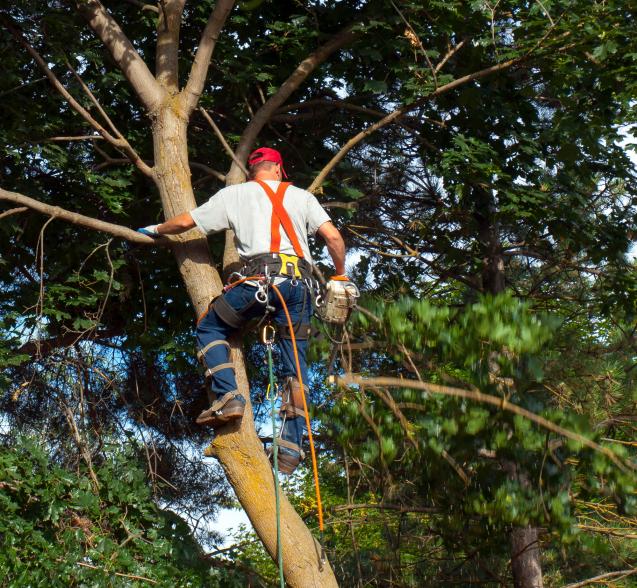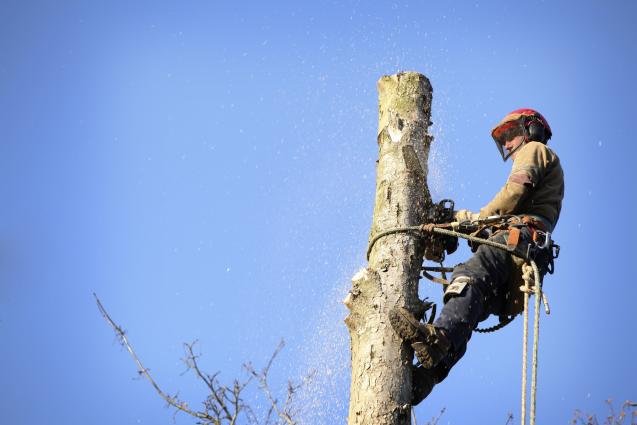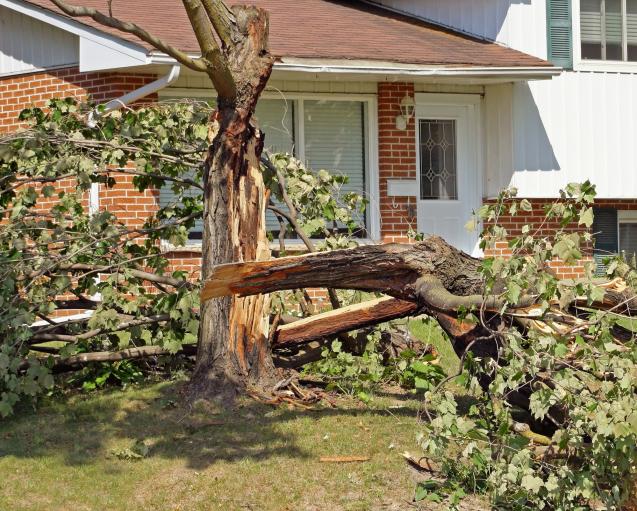
The Ultimate Home Emergency Kit Checklist for Australians
By Wolf Trees and Gardens|August 14, 2024
Natural disasters and emergencies can strike at any time, and being prepared with a home emergency kit is crucial. For Australians, who often face bushfires, floods, cyclones, and other hazards, a well-stocked kit can make a significant difference in ensuring the safety and well-being of families. Preparedness doesn't just save lives; it also helps protect property and provides peace of mind.
In regions prone to severe storms, tree removal can play an essential role in reducing risks. Taking proactive measures such as this can prevent damage to homes and lives. Now, let's explore the key components of an effective home emergency kit and what homeowners need to consider for comprehensive preparedness.
Essential Supplies for Your Emergency Kit
Firstly, it's vital to gather non-perishable food and water supplies. Aim to have at least three days' worth of food and water for each person in your household. High-energy foods like nuts, dried fruits, and protein bars are essential. Additionally, store enough water, accounting for one gallon per person per day.
A first aid kit and necessary medications follow as another priority. Stock your first aid kit with bandages, antiseptic wipes, sterile gloves, gauze, and personal medications. Don't forget items like tweezers, scissors, and a thermometer. Keeping an extra supply of any necessary prescription medications is equally important.
Tools and safety equipment are indispensable in an emergency. Include items such as a multi-tool, duct tape, a wrench, and pliers. They can prove invaluable for minor repairs and turning off utilities. Don't overlook personal hygiene items and sanitation supplies, such as wet wipes, hand sanitiser, and trash bags. These essentials help maintain cleanliness and prevent the spread of germs.
Emergency Communication Tools
Communication is key during emergencies. A battery-powered or hand-crank radio provides critical updates when the power goes out. Equip yourself with mobile phone chargers and power banks to keep devices operational. A whistle can serve as a signal device, and having one for each family member is a good idea.
Compile a list of emergency contacts and important documents. Include phone numbers for family, friends, and emergency services. Safeguard copies of essential documents like insurance policies, medical records, and identification in a waterproof container.
Reducing Storm Risks Through Tree Removal
Storm risks can be significantly reduced through tree removal. Regularly inspecting trees around your property can identify potential hazards. Look for signs of disease, weak branches, or overgrowth near structures.
Hiring professional tree removal services ensures work is done safely and efficiently. These experts can assess and remove dangerous trees, reducing the risk of them damaging your home during severe weather. Regular maintenance and pruning keep trees healthy and less likely to break under the strain of wind and rain.
Investing in tree removal not only reduces risks during storms but also contributes to the overall safety and aesthetics of your property. It’s a practical step toward safeguarding your home.
Safety Gear and Protective Equipment
Your emergency kit must include safety gear and protective equipment. A fire extinguisher and smoke detectors are non-negotiable in any home. Check them regularly to ensure they are functional.
Protective clothing and gloves protect against exposure to harmful elements and debris. Sturdy footwear and helmets further ensure personal safety during an emergency evacuation or cleanup. Flashlights and extra batteries are also imperative, providing reliable lighting when the power is out, and extra batteries keep them operational.
Special Considerations for Pets and Family Members
Don't forget the needs of pets and vulnerable family members when preparing your emergency kit. For pets, store enough food, water, and medications for at least three days. A leash, collar, and a portable carrier should also be ready.
Children and elderly members might require comfort items like toys, books, or familiar objects, which can help reduce stress during emergencies. Make sure to include extra blankets and sleeping bags to keep everyone warm and comfortable.
A backup supply of essential daily items, including baby formula, diapers, and personal hygiene products, should also be part of your kit. This ensures that every member of your household is well cared for.
Conclusion
In summary, an emergency kit is a vital tool for preparedness, especially for Australians who face a variety of natural hazards. Non-perishable food and water, first aid supplies, tools, and hygiene items form the foundation of a robust kit. Communication tools and protective gear further enhance safety.
It's crucial to address storm risks by inspecting and removing hazardous trees around your property. Doing so not only protects your home but also contributes to overall community safety.
Regularly updating and checking your emergency kit ensures its readiness when you need it most. Make a plan today to prepare your emergency kit, considering the unique needs of your household, and take steps to secure your property against potential threats. By doing so, you'll be better equipped to handle emergencies and protect those you love.
In regions prone to severe storms, tree removal can play an essential role in reducing risks. Taking proactive measures such as this can prevent damage to homes and lives. Now, let's explore the key components of an effective home emergency kit and what homeowners need to consider for comprehensive preparedness.
Essential Supplies for Your Emergency Kit
Firstly, it's vital to gather non-perishable food and water supplies. Aim to have at least three days' worth of food and water for each person in your household. High-energy foods like nuts, dried fruits, and protein bars are essential. Additionally, store enough water, accounting for one gallon per person per day.
A first aid kit and necessary medications follow as another priority. Stock your first aid kit with bandages, antiseptic wipes, sterile gloves, gauze, and personal medications. Don't forget items like tweezers, scissors, and a thermometer. Keeping an extra supply of any necessary prescription medications is equally important.
Tools and safety equipment are indispensable in an emergency. Include items such as a multi-tool, duct tape, a wrench, and pliers. They can prove invaluable for minor repairs and turning off utilities. Don't overlook personal hygiene items and sanitation supplies, such as wet wipes, hand sanitiser, and trash bags. These essentials help maintain cleanliness and prevent the spread of germs.
Emergency Communication Tools
Communication is key during emergencies. A battery-powered or hand-crank radio provides critical updates when the power goes out. Equip yourself with mobile phone chargers and power banks to keep devices operational. A whistle can serve as a signal device, and having one for each family member is a good idea.
Compile a list of emergency contacts and important documents. Include phone numbers for family, friends, and emergency services. Safeguard copies of essential documents like insurance policies, medical records, and identification in a waterproof container.
Reducing Storm Risks Through Tree Removal
Storm risks can be significantly reduced through tree removal. Regularly inspecting trees around your property can identify potential hazards. Look for signs of disease, weak branches, or overgrowth near structures.
Hiring professional tree removal services ensures work is done safely and efficiently. These experts can assess and remove dangerous trees, reducing the risk of them damaging your home during severe weather. Regular maintenance and pruning keep trees healthy and less likely to break under the strain of wind and rain.
Investing in tree removal not only reduces risks during storms but also contributes to the overall safety and aesthetics of your property. It’s a practical step toward safeguarding your home.
Safety Gear and Protective Equipment
Your emergency kit must include safety gear and protective equipment. A fire extinguisher and smoke detectors are non-negotiable in any home. Check them regularly to ensure they are functional.
Protective clothing and gloves protect against exposure to harmful elements and debris. Sturdy footwear and helmets further ensure personal safety during an emergency evacuation or cleanup. Flashlights and extra batteries are also imperative, providing reliable lighting when the power is out, and extra batteries keep them operational.
Special Considerations for Pets and Family Members
Don't forget the needs of pets and vulnerable family members when preparing your emergency kit. For pets, store enough food, water, and medications for at least three days. A leash, collar, and a portable carrier should also be ready.
Children and elderly members might require comfort items like toys, books, or familiar objects, which can help reduce stress during emergencies. Make sure to include extra blankets and sleeping bags to keep everyone warm and comfortable.
A backup supply of essential daily items, including baby formula, diapers, and personal hygiene products, should also be part of your kit. This ensures that every member of your household is well cared for.
Conclusion
In summary, an emergency kit is a vital tool for preparedness, especially for Australians who face a variety of natural hazards. Non-perishable food and water, first aid supplies, tools, and hygiene items form the foundation of a robust kit. Communication tools and protective gear further enhance safety.
It's crucial to address storm risks by inspecting and removing hazardous trees around your property. Doing so not only protects your home but also contributes to overall community safety.
Regularly updating and checking your emergency kit ensures its readiness when you need it most. Make a plan today to prepare your emergency kit, considering the unique needs of your household, and take steps to secure your property against potential threats. By doing so, you'll be better equipped to handle emergencies and protect those you love.



